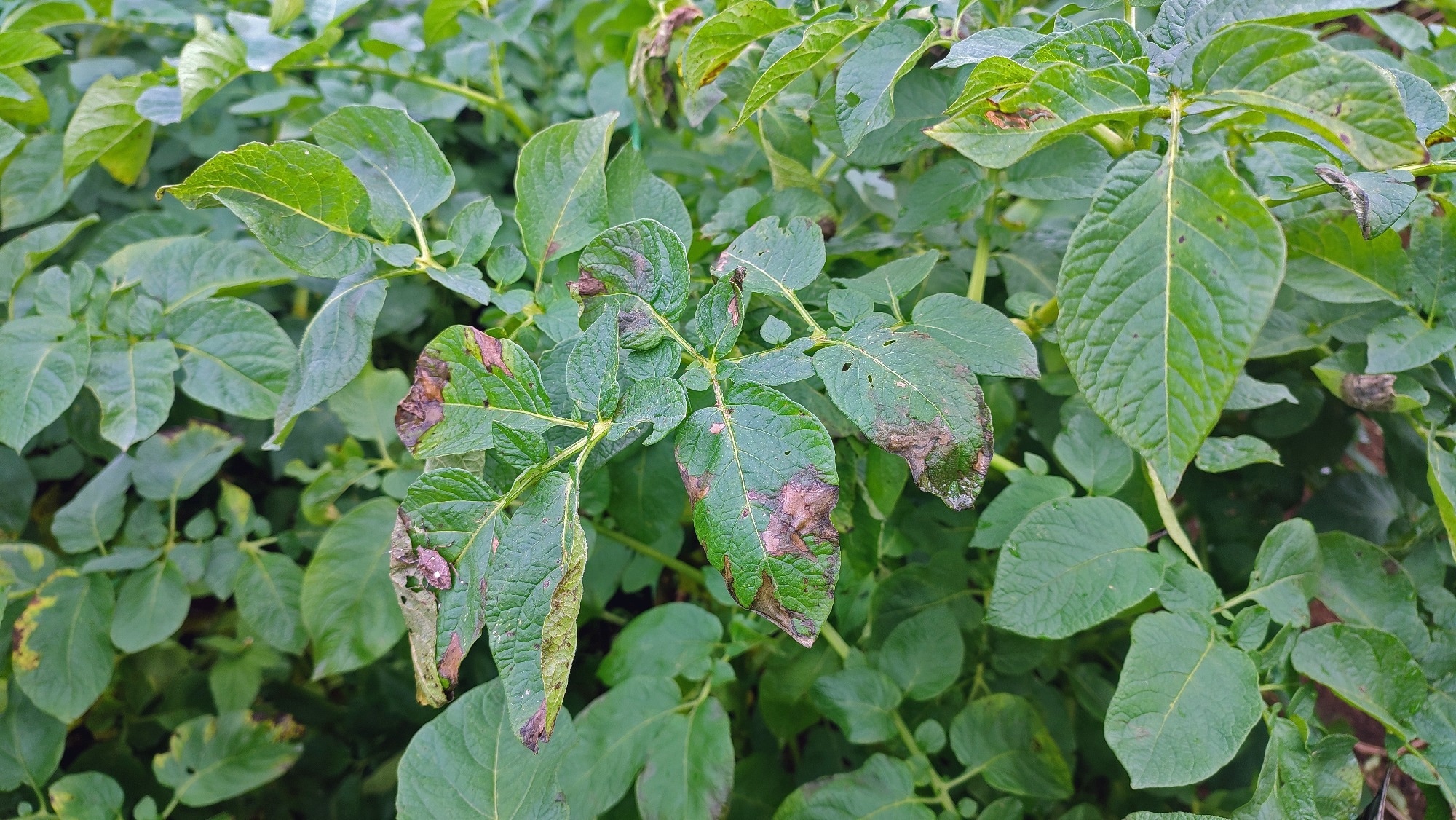In an article published in the journal Potato Research, researchers analyzed machine learning (ML) models for predicting early and late blight in potato leaves, using a database of over 4000 weather condition records.
 Study: Advanced ML Model Predicts Potato Blight. Image Credit: Bert Swandi/Shutterstock.com
Study: Advanced ML Model Predicts Potato Blight. Image Credit: Bert Swandi/Shutterstock.com
By employing methods like K-means clustering, principal component analysis (PCA), and copula analysis, and utilizing models such as logistic regression, gradient boosting, multi-layer perceptron (MLP), support vector machines (SVM), and K-nearest neighbors (KNN), the authors identified critical weather factors. The MLP model with feature selection achieved a 98.3% accuracy, emphasizing optimized ML models for effective disease management in agriculture.
Background
Potato, the world's most significant non-cereal food crop, is crucial for global food security and economic stability. However, diseases like early and late blight significantly reduce its yield and quality. Traditional disease management methods, which rely on labor-intensive visual surveys and chemical applications, are inadequate and environmentally harmful.
Recent advancements in artificial intelligence (AI) and ML offer new approaches to predicting and managing these diseases. Previous research has utilized AI models to predict outbreaks but often lacked a comprehensive integration of weather-related factors critical to disease development.
This paper addressed these gaps by analyzing over 4000 records of weather conditions—such as temperature, humidity, wind speed, and atmospheric pressure—using advanced ML techniques like K-means clustering, PCA, and copula analysis. The study employed logistic regression, gradient boosting, MLP, SVM, and KNN models, with feature selection methods like binary Greylag goose optimization, achieving a notable accuracy of 98.3% with the MLP model.
Advanced ML Methodology
The proposed methodology utilized ML to predict potato leaf disease outbreaks based on weather conditions. The dataset contained 4020 records with weather information such as temperature, wind speed, humidity, and atmospheric pressure, along with disease data on early and late blight. Data preprocessing involved normalization, encoding, and PCA to reduce dimensionality and facilitate data visualization. Clustering with K-means identified patterns in the data, enhancing model training quality.
Copula analysis generated synthetic datasets to simulate future scenarios and identify important weather-disease interactions. Feature selection transformed features into binary format, isolating crucial variables for disease prediction. Advanced binary optimization algorithms, including binary Greylag goose optimization and binary waterwheel plant algorithm, were tested to improve predictive accuracy.
Various ML models were employed, such as logistic regression, MLP, random forest, SVM, KNN, Naive Bayes, decision tree, gradient boosting, and SVM with radial basis functions (RBF) kernel. These models were evaluated based on accuracy, sensitivity, and specificity to determine the best approach for forecasting potato leaf diseases. The research aimed to enhance proactive agricultural management by accurately predicting disease outbreaks through sophisticated data analysis and ML techniques
Evaluation and Analysis
The experimental results demonstrated the effectiveness of ML models in predicting potato leaf diseases using a weather dataset. The analysis was divided into two phases, without feature selection, and with feature selection, providing a comprehensive comparison.
- Without feature selection: Various ML models were evaluated, with logistic regression achieving the highest accuracy (94.89%), followed closely by MLP, random forest, and SVM models, all scoring over 93%. This indicated that these models effectively captured the intricate relationships between meteorological variables and disease incidences. Sensitivity and specificity scores were also high, reducing false positives and negatives, and laying a solid foundation for further optimization.
- With feature selection: Feature selection significantly improved model performance. The binary Greylag goose optimization algorithm showed the lowest average error and small standard deviation, indicating effective feature selection. Other methods like binary particle swarm optimization and binary whale optimization algorithm also performed well but with larger errors and deviations. With feature selection, MLP achieved the highest accuracy (98.3%), and KNN and random forest also showed substantial improvements with accuracies over 96.7%.
This phase highlighted that feature selection eliminated noise and focused models on the most crucial predictive parameters, enhancing accuracy, sensitivity, and specificity.
Conclusion
In conclusion, the researchers demonstrated the effectiveness of ML models in predicting potato leaf diseases by analyzing over 4000 weather condition records. Advanced techniques like K-means clustering, PCA, and copula analysis identified critical weather factors. Feature selection, especially using algorithms like binary Greylag goose optimization, significantly improved model accuracy, with MLP achieving 98.3%.
Despite the limitations, the findings highlighted the potential of optimized ML models for proactive agricultural disease management. Future work should expand the dataset, explore additional crops, and develop user-friendly tools for broader application in sustainable agriculture.